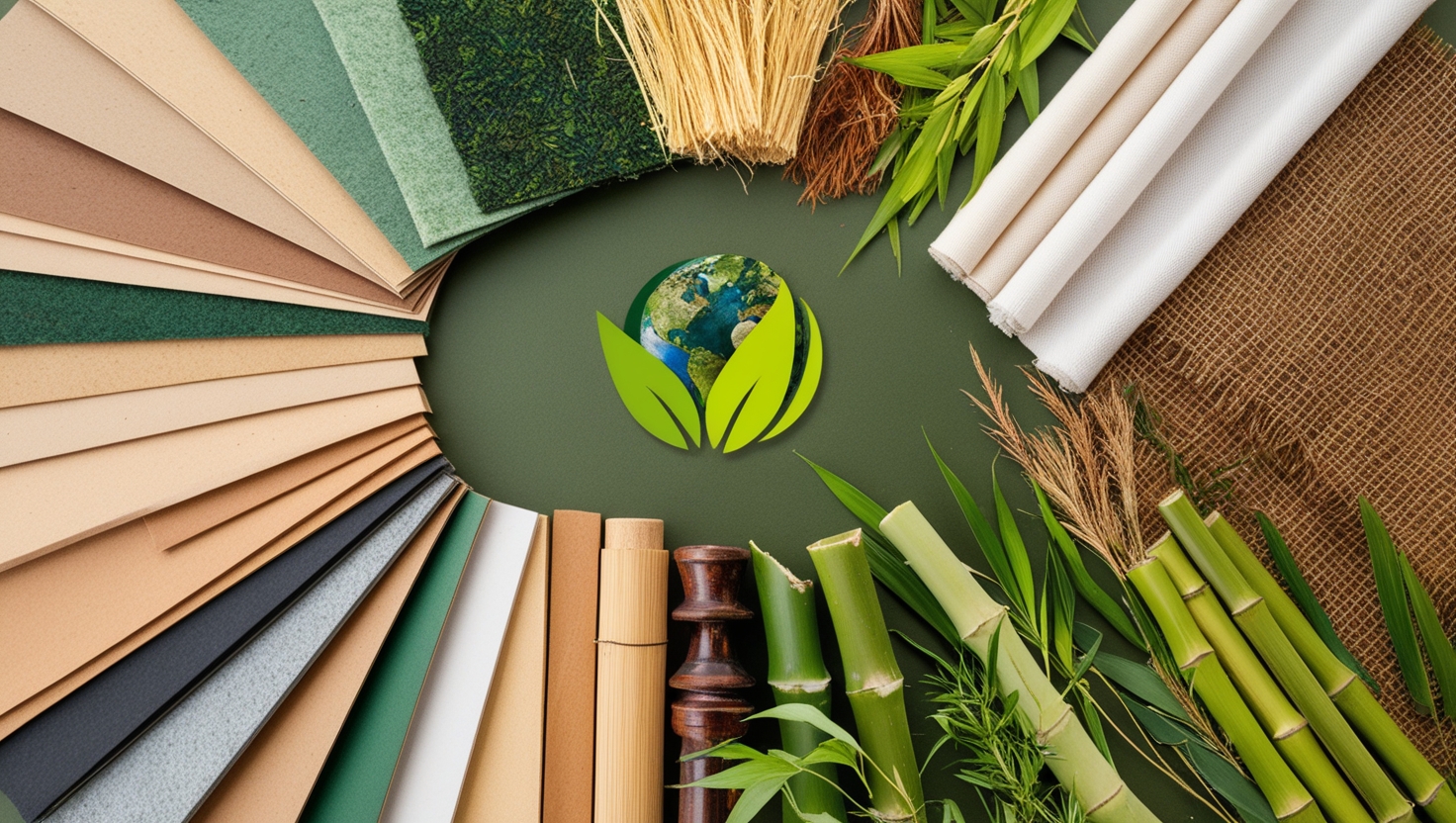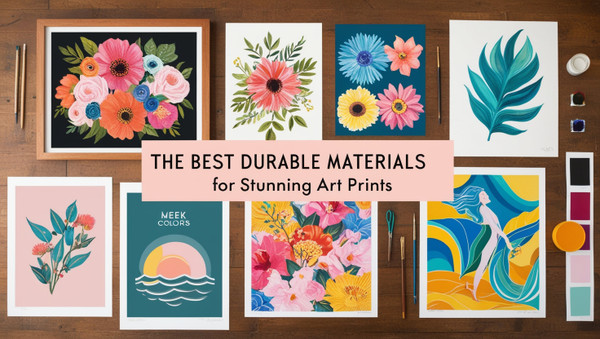The Best Durable Materials for Stunning Art Prints
Posted by MintSuper Art on 23rd Dec 2024
When artists create art prints, they want them to last a long time. Using durable materials is very important. It helps keep the colors bright and the prints safe. This article will look at different materials artists can use. It will also share tips on how to take care of art prints. Keep reading to learn how to keep art pieces beautiful and long-lasting!
Key Takeaway
- Using durable materials helps art prints stay bright and safe.
- Different materials like canvas, metal, and acrylic have unique benefits.
- Proper care and storage practices can make art prints last longer.
What Makes an Art Print Truly Durable
Durability is not an add-on—it’s built into the print from material choice to finishing touches. Blended canvases, UV-protective coatings, and archival-quality stretchers all contribute to how well a print holds up. These choices are especially critical if your print will face sunlight, humidity, or frequent handling.
Fine Art Paper
Credits: Clairefontaine
Fine art paper is carefully chosen by artists who want their artwork to last. It has special qualities that help preserve the vibrancy and integrity of art over time. (1)
- Acid-Free
- Regular paper contains acid that causes prints to yellow and fade.
- Fine art paper resists this damage, keeping colors bold and fresh.
- Fade-Resistant
- Helps protect artwork from fading caused by light and air exposure.
- Keeps the art looking as it did when it was first created.
- Heavyweight (300gsm)
- Strong enough to handle detailed artwork without tearing or warping.
- Ideal for delicate watercolors or bold ink prints.
- Proper Storage
- Store in cool, dry places to maintain paper’s condition.
- Use acid-free boxes or sleeves to protect against light, dirt, and humidity.
Fine art paper is more than just a surface—it’s a reliable protector that ensures artwork lasts for years.
Canvas

Canvas, with its textured surface, offers a unique charm that mimics the look of traditional paintings. Often chosen for reproducing oil and acrylic artworks, it brings a sense of depth and authenticity to prints. The material feels sturdy, almost timeless, and when hung on a wall, it transforms a space into something personal and warm. Canvas prints aren’t just for indoors either; they can handle outdoor settings, adding versatility to their appeal.
Durability is another reason canvas stands out. It resists fading, but sunlight can still be a challenge. To combat this, UV-protective varnishes are often applied, acting like a shield against harsh rays. This extra layer ensures the colors stay vibrant and true, even after years of exposure. Artists and collectors alike value this protection, knowing it preserves the beauty of the piece for the long haul. A small step, like varnishing, can make all the difference in keeping a canvas print looking fresh and alive.
Metal Prints
Metal prints are taking the art world by storm, with the art print market recently experiencing a remarkable 107% surge in auction activity. These prints, crafted from durable aluminum, offer exceptional longevity and are a vibrant choice for both indoor and outdoor displays. Thanks to their resistance to moisture and fading, the colors on metal prints remain striking over time, making them a favorite for modern art enthusiasts.
Caring for metal prints is refreshingly simple, which only adds to their appeal. With minimal effort, you can preserve their brilliance for years to come.
Tips for maintaining your metal prints:
- Use a soft, non-abrasive cloth for cleaning to avoid scratches.
- Avoid harsh cleaning agents; a damp microfiber cloth is ideal.
- Treat them like fine furniture—handle with care to maintain their sleek finish.
Artists appreciate the low-maintenance nature of metal prints, with one stating, “I love how easy it is to care for my metal prints!”
Acrylic Prints
Acrylic prints have a way of standing out with their glossy finish that almost seems to glow. When artwork is mounted on acrylic, the colors appear richer and more vibrant, almost like they’re lit from within. This effect makes them a popular choice for anyone wanting to showcase bold, colorful pieces. Plus, acrylic is durable. It resists daily wear and tear better than some other materials, which makes it practical for both homes and galleries. It’s not indestructible, of course, but it holds up well over time.(2)
To keep acrylic prints looking their best, a little care goes a long way. Using soft, non-abrasive cleaners is key to avoiding scratches on the surface. Many people find that a microfiber cloth and a gentle cleaning solution work just fine. Harsh chemicals or rough scrubbing can dull the finish, so it’s better to stick to something mild.
Whether hung in a living room, office, or even a hallway, acrylic prints have a knack for drawing attention without being overly fussy. They’re a solid option for anyone wanting a clean, modern aesthetic.
Eco-Friendly Materials

Environmental consciousness is huge in the art world right now. Artists are choosing eco-friendly materials that pack a punch both in quality and sustainability. Recycled paper and upcycled fabrics aren't just good for the planet - they can be incredibly durable when they're acid-free and well-made.(3)
Natural fibers like hemp and bamboo are powerhouses of strength and naturally resist mold. Plant-based inks are another game-changer - they're earth-friendly and can last just as long as traditional inks when made right. Artists often say, "I want to do my part for the Earth while creating art." It's about creating beauty that doesn't cost the planet, and with modern sustainable practices, you don't have to compromise on quality.
Preservation Practices
Art prints, with their delicate nature, require thoughtful care to maintain their beauty over time. Proper handling, storage, and display can significantly extend their lifespan, preserving their vibrancy and detail for years.
Storage tips for art prints:
- Store in a stable environment with consistent temperature and humidity to prevent warping or mold.
- Use acid-free materials, like archival boxes or sleeves, to shield prints from dirt and contaminants.
- Avoid placing prints near damp areas or in direct contact with unprotected surfaces.
Best practices for display:
- Keep prints out of direct sunlight to prevent fading and discoloration.
- Use UV-filtering glass or acrylic as a protective barrier while displaying prints.
- Ensure the display area is free from excessive humidity or heat sources.
By combining careful storage and mindful display techniques, art prints can continue to captivate and inspire, retaining their original charm for generations.
FAQ
What makes fine art prints last longer, and should I choose acid free or regular paper?
Long lasting art prints start with choosing the right materials. Acid free paper and archival quality materials prevent yellowing and deterioration over time. Fine art papers like cotton rag and alpha cellulose provide excellent durability while maintaining print quality. The paper type you choose affects how well your art prints will stand up to time and display conditions.
How do different printing materials like canvas prints, metal prints, and acrylic prints compare for durability?
Canvas prints offer a classic, textured look that's resistant to damage. Metal prints provide exceptional durability and crystal clear image quality with a high gloss finish. Acrylic prints combine depth and protection, making them ideal for fine art photography. Each print medium has unique qualities that affect both appearance and longevity.
What should I consider about environmental impact when choosing printing materials?
Eco friendly options include FSC certified papers, post consumer waste materials, and recycled paper. Green art practices are becoming more popular, with many print materials now made from sustainable sources. Natural pigments and recycled materials help reduce environmental impact while maintaining high quality results.
How does the printing process affect the durability of art reproductions?
Digital printing and dye sublimation techniques create quality prints that resist fading. Based inkjet methods on fine art paper produce bright white, lasting results. The printing material and printing materials you choose work together with the printing process to determine how well your art pieces will endure over time.
What should artists know about selling and marketing durable art prints?
When you sell prints, consider offering custom sizing options to meet buyer preferences. Print on demand services can help manage inventory while maintaining print materials quality. Share your art practices and printing process details on social media to inform buyers about the durability of your art supplies and materials.
Conclusion
In the end, selecting durable materials for art prints is very important. It ensures that the artwork remains beautiful and intact over time. By understanding the properties of different materials, artists can make smart choices. Following proper care practices helps keep art prints safe. With the right materials and care, art can last for many years.
References
- https://www.ceyisestudios.com/how-to-choose-fine-a...
- https://posterjack.ca/blogs/inspiration/difference...
- https://www.gemmalessinger.com/studio-news/sustain...

